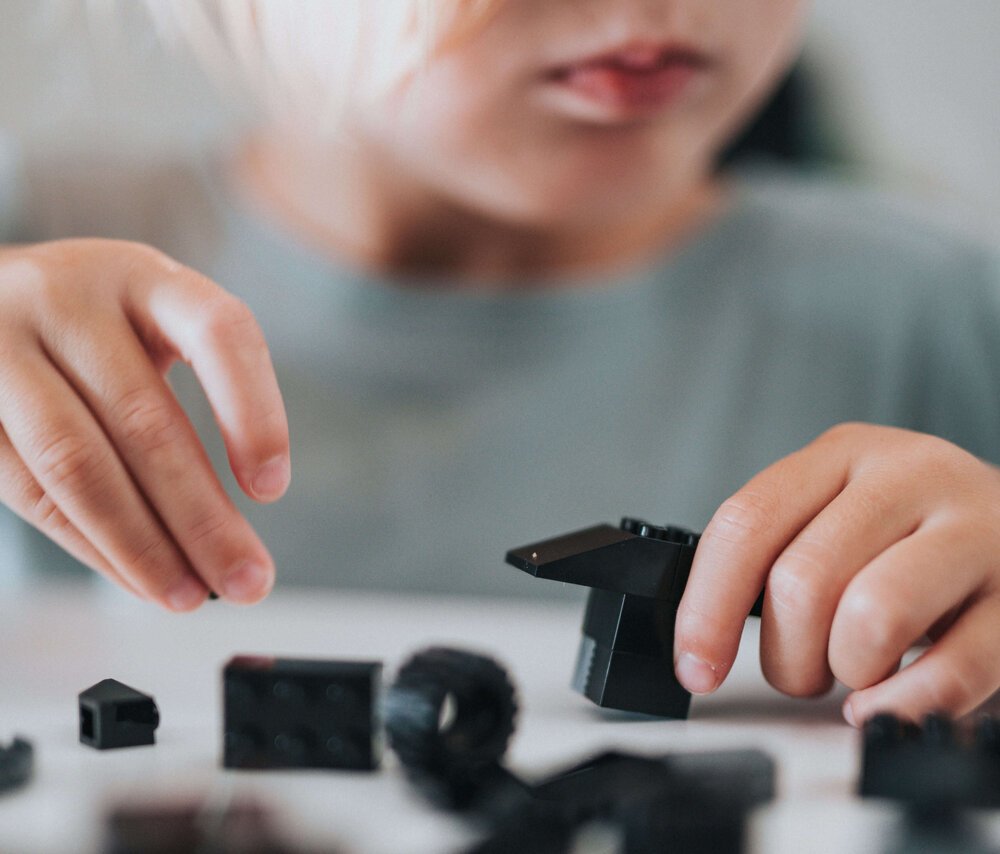A Peek Into Play Therapy
It’s another day in the therapy office where I spend a good deal of time on the floor with toys. Today I am happy to see a first grade girl named Anne. We bring out four little horses and a mat with an imaginary horse farm. The farm has fences and a pond and some stables and lots of fun places for horses to run.
Her mother is watching from her comfortable seat. I ask the little girl which two horses will be hers and which will be mine. We giggle as she gives them names. She takes her favorite horse and dances over to my side table to let the horse prance around the plant there.
“Pay attention,” her mother says. I smile at the mom and motion a gentle “sshhh”. “This is not like school,” I say to Anne. “Anne gets to make her own decisions about how to play so she can express and think freely.” Anne’s mother quickly catches on.
I spend a few minutes doing quite a few silly things, like swimming in the pond, jumping over fences, and all the horsey kinds of things. Anne is comfortable with me. She knows I will join her play but that she leads, and what kid doesn’t like that?
I give my little client a small prompt.
“Do these horses go to school?”
She might take the prompt, and she might not. It’s important for me to be patient, because Anne was recently threatened by some boys who said they were bringing a gun to school the next day to shoot her. Now she won’t go to school and she has started wetting the bed.
Anne is delighted with the idea that her horses could go to school. But my horse - he’s the bully I’ve been informed - he’s not allowed to go.
“Ok, I say. How far away should he go?”
“Over here,” Anne pronounces, pointing to the fenced in area.
I trot my horse to the fenced in area and watch the other horses. I ask if they are friends. We wonder together where the principal horse is. Anne never comes near the fenced horse.
As the therapist, I’m playing and laughing, too. And sometimes I’m very serious. Like when Anne’s gentle palomino says he’s worried the bully horse will get out of the fence.
“Do you think your horse school is safe?” I ask Anne.
“Not safe enough because that fence might not be strong.”
“What can we do to make it safer?” I ask.
We decide to make the fence stronger. One of Anne’s horses (she has ALL the good ones) is kicking against the fence to see if it is strong and one of her horses, who has just become the principal, is charged with some task using screws that Anne has thought up.
“Remember the bully at your school. Is he allowed to come back?” I ask.
“That’s what I get worried about,” she says. “What if he comes back?”
“Let’s ask you mom about it,” I say. “Is that bully allowed to come back to the school?”
“He is not. Not ever,” says the mother. Anne has heard this a million times from her mother. But Anne has not FELT that her bully is not coming back. There are signs that the message of safety isn’t getting through.
Fortunately for Anne, her bully is also a first grader. He’s not actually likely to make good on his threat, but she is little and she is only figuring out how the world works. And for kids, a simple explanation about how this first grade boy is expelled is not enough. She will only feel unheard while her anxiety ties up in a little ball inside that wreaks havoc on her developing neurosystem.
This little girl needed to know that adults could help put up safe fences for her.
This is a glimpse into how play therapy works. A good play therapist will let the child lead, help guide the child gently, and never lose sight of the purpose of the child’s therapy. This child needed to find her own sense of courage. She needed to trust the adults in her life. She needed to say the things she feared so she could learn how to overcome them.
If I had sat Anne down to talk through the situation, like I might with an adult, she wouldn’t really process. Children learn by play. It’s how they are wired. In fact, play is repeatedly shown to be to the most effective way for children to learn most skills.
Anne would not need extensive therapy, only a few more sessions where she would learn how to ask for help if she was feeling worried.
“Can we play with the horses next week,” Anne asks as she is leaving.
“You bet! But the bully horse isn’t coming next week. He’s not allowed.”
